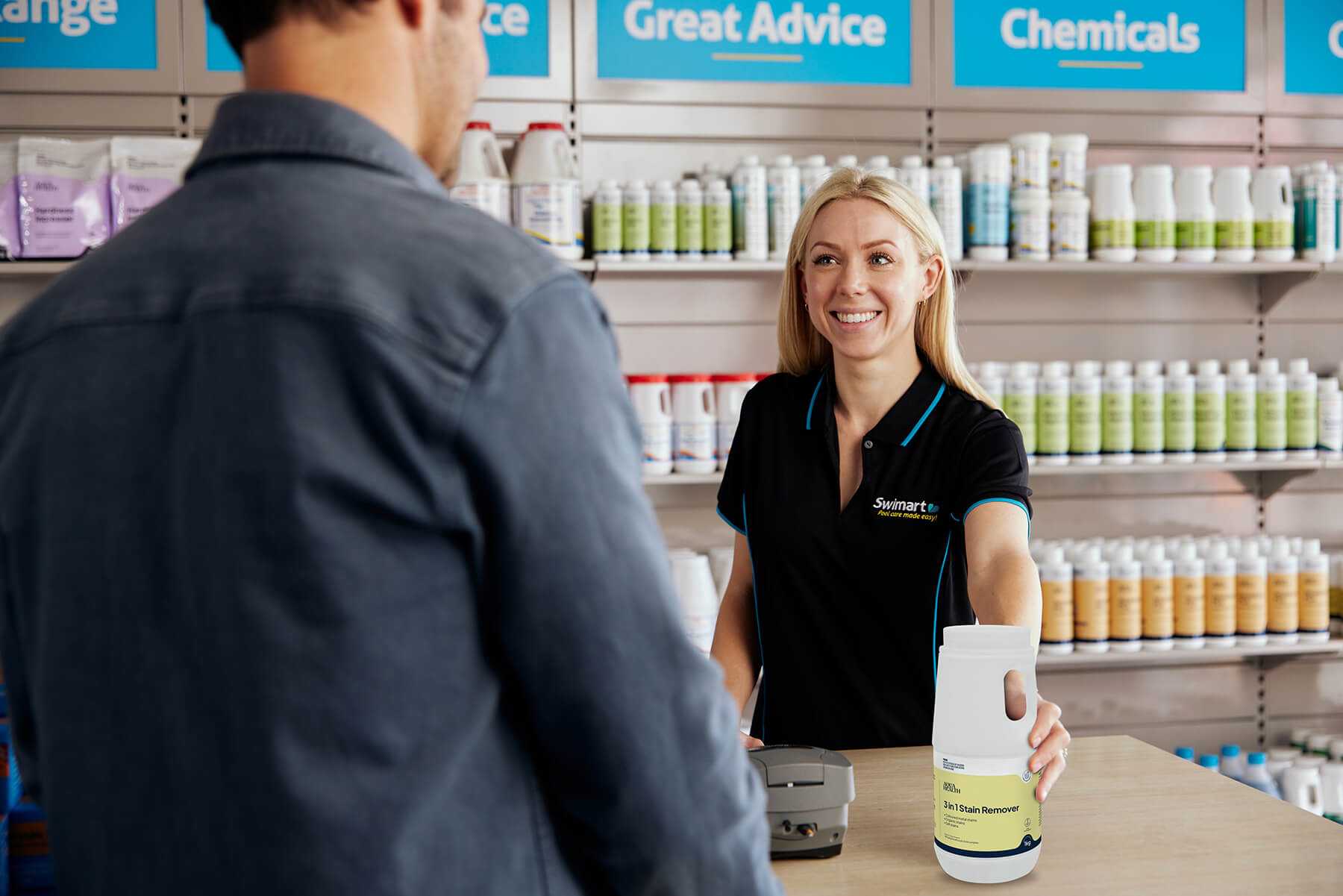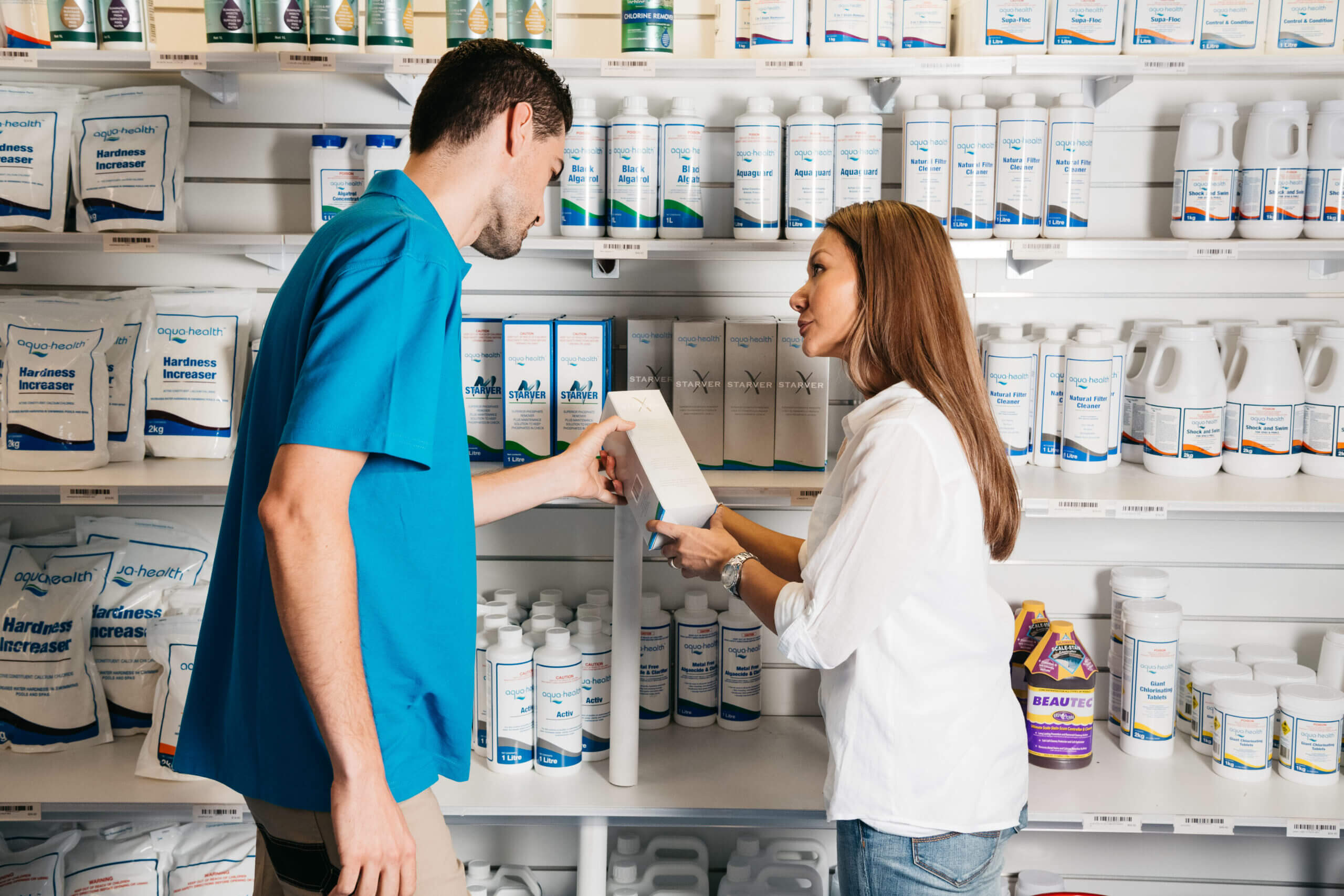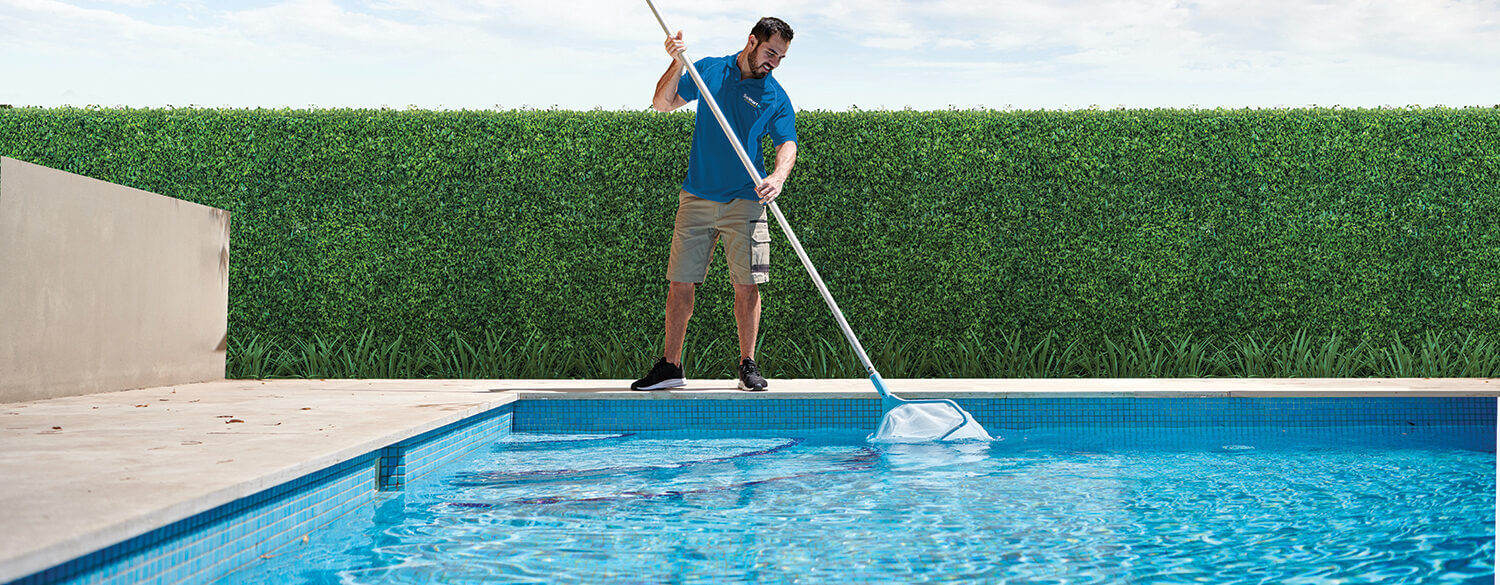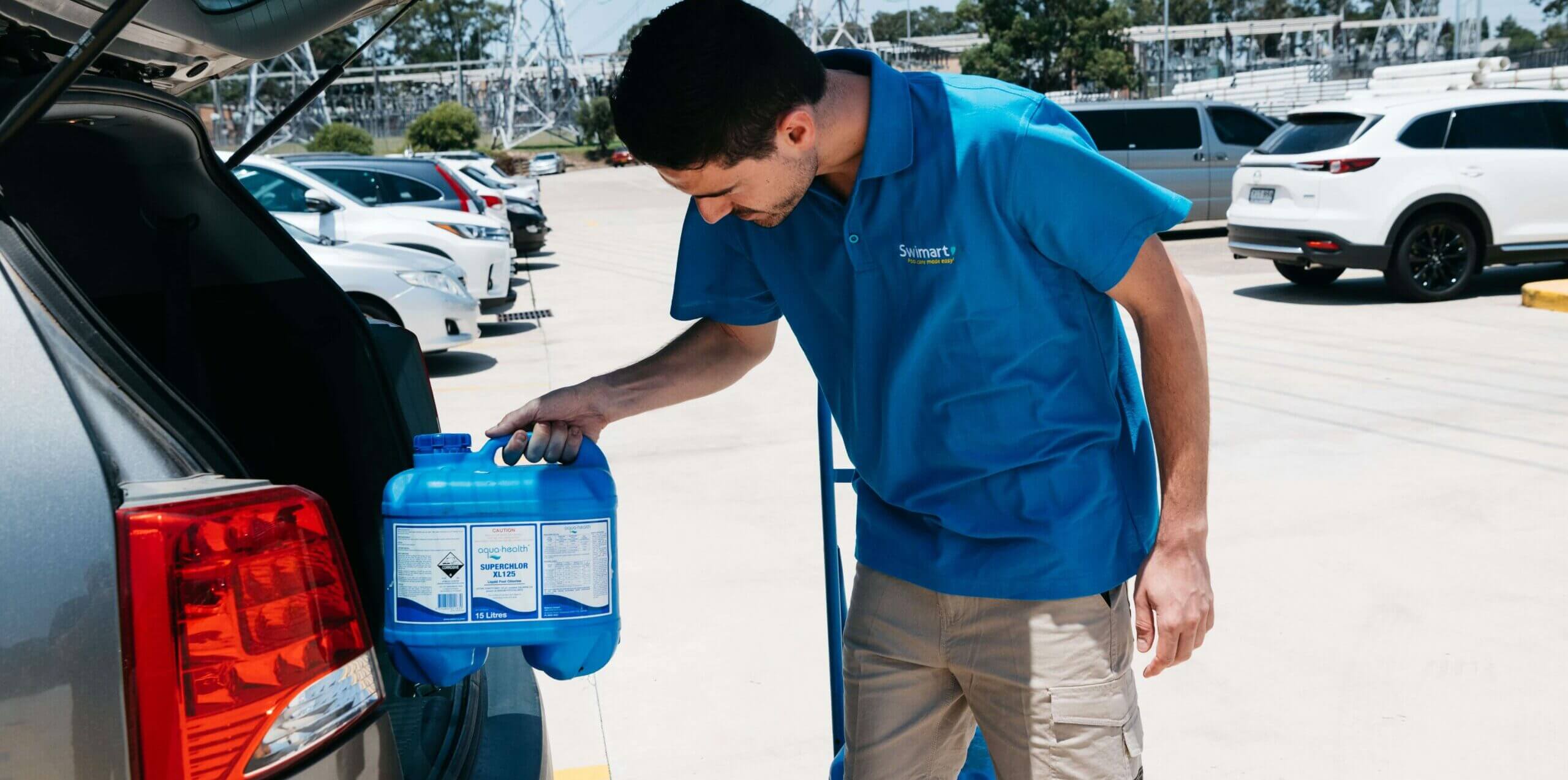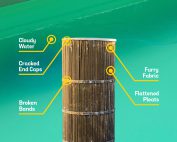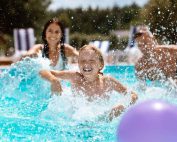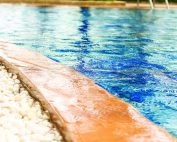FAQ
In the sunnier months, the sun ‘eats’ your pool’s chlorine. To minimise chlorine loss your pool needs what’s known as ‘sunscreen’.
Using sunscreen on your pool can save you up to 50% on your chlorine expenses for chlorine swimming pools and it means shorter chlorination times for saltwater swimming pools. Some chlorine products known as stabilised chlorines contain sunscreen, while those that don’t are referred to as unstabilised chlorines. Even with stabilised chlorines, the sunscreen level should be checked monthly.
There are three basic types of pool heating systems. They include solar, gas and heat pumps.
Why choose solar? Solar heating is popular because the energy to heat the water is free. You can harness the power of the sun to extend your swimming season.
The principles involved in solar pool heating are very simply illustrated. Imagine a garden hose that has been lying in the sun for hours. When you turn on the tap, out comes hot water. That’s solar heating: the sun’s energy has been absorbed by the hose and transmitted as heat to the water inside it. The hose acts as a solar collector.
Shocking your pool or spa kills bacteria, live organisms and burns off other contaminants (like dirt, debris or algal spores), so your pool sparkles and you can swim safely, sooner – within 15 minutes in some cases!
In some circumstances (when your pool or spa is very low on chlorine) you may need to ‘shock’ it by adding a large dose of chlorine.
Talk to your local Swimart pool and spa specialist about when and how to correctly shock your pool.
Contrary to popular opinion, too much chlorine can make swimming uncomfortable by creating sore eyes and itchy skin for swimmers. Maintaining correct chlorine levels at all times is important.
Take a sample of your pool water along to your local Swimart pool and spa specialist for computer testing. They will analyse your pool or spa water and advise you on how much chlorine is suitable for your pool or spa.
Chemically balanced and sanitised water (measuring correct sanitiser, pH, alkalinity and calcium levels) prevents scaling, corrosion, as well as unnecessary damage to pool equipment and allows sanitisers to work effectively.
It also ensures that your pool water is safe to swim in. If water is out of balance, the effectiveness of sanitation is diminished and you may need to use more chemicals to maintain clean and healthy water. Balanced water looks better, too!
Heavy rain can change the pH level of your pool water. Water out of balance is uncomfortable for swimmers (think irritated skin and sore eyes). It can cause expensive damage to your pool and equipment and interfere with pool sanitisation.
Hurry! Ask your local Swimart pool and spa specialist about getting the right balance for your pool type and size.
To keep your pool cleaner in good working condition, regularly clean your skimmer box and pump basket. Backwashing and rinsing your filter regularly will also help. Many factors impact upon the performance of your pool cleaner, including dirty filters, excessive chemical use, unbalanced water and incorrect suction levels.
- Never allow pool chemicals to mix with each other or household chemicals. Use a clean scoop for each chemical and never combine material from “old” and “new” containers. Chemical reactions could take place resulting in possible fires or explosions.
- Never use metallic utensils — use plastic, glass, china or enamelware utensils and buckets only, and be sure that they are clean and dry.
- Add chemicals to water. Never add water to chemicals.
- Always add chemicals directly to the pool water, either in a suitable feeder, distributed across the surface of the pool, or diluted and poured into the water. Follow label use instructions.
- Never add chemicals to the pool water while swimmers are using the pool.
- Keep chemicals out of reach of children.
- Never reuse old chemical containers.
- Wash out empty disinfectant containers before disposing to eliminate danger of fire, explosion or poisoning.
- Carefully clean up any spilled chemicals with large amounts of water to dilute and wash away the chemicals.
- Do not inhale dust or fumes from any pool chemicals. If necessary use protective devices from breathing, handling and eye protection.
- Promptly wash off any residues which get on your skin.
- Chemicals for test kits should be replaced each year.
- Keep the original lids on all chemical containers and make sure the lids are closed tightly when not in use.
- Don’t stack different chemicals on top of one another.
- Keep liquid chemicals away from dry chemicals.
- Physically separate all different forms of chemicals.
- Follow all label directions and use instructions carefully.
